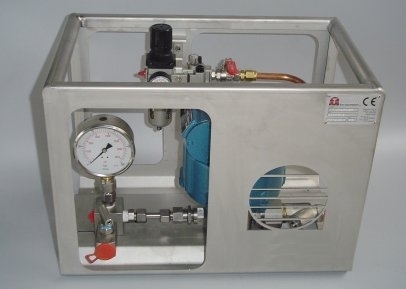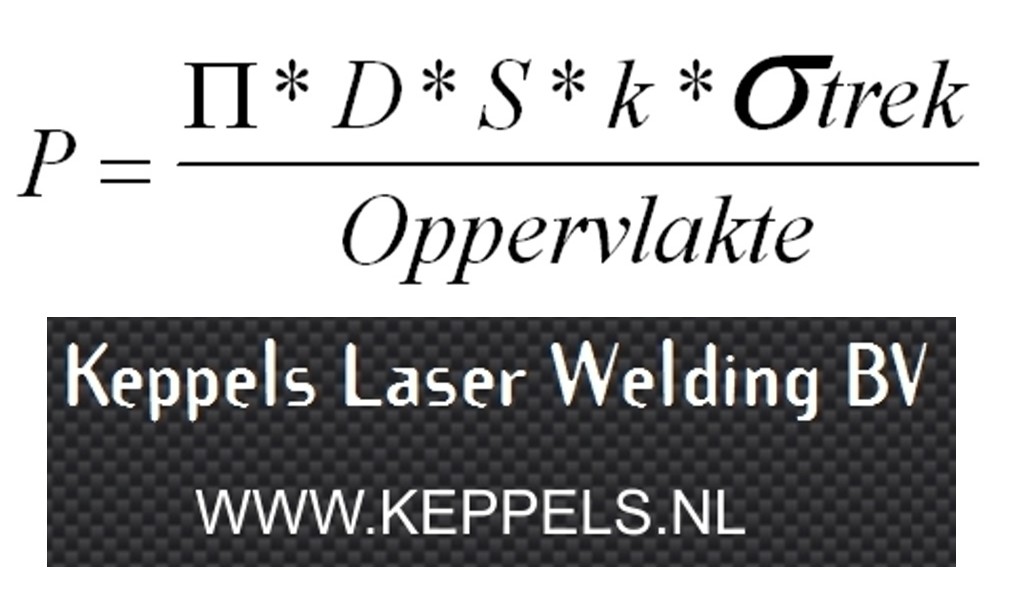Pillowplate pressure
For the production and application of pillowplate are the following pressures important:
Pillowplate working pressure
The pressure the plate will have during normal operation. This is the maximum possible pressure during the whole lifetime of the pillowplate in the system.
Pillowplate design pressure
The design pressure is the pressure needed to design according a pressure code, about 30% higher than the working pressure.
Pillowplate inflating pressure
The inflating pressure is the pressure needed to inflate the pillowplate to the required pillowheight. The pillowheigth is normaly 2 to 5 mm. The inflation pressure must be 15 to 20 bar higher than the design pressure and also 20 bar below the burstpressure.
The inflating is done with a air driven pump skid.
Pillowplate burstpressure
The principal for the burstperssure calculation is that the laserweld will hold and the pillowplate topplate will break under the applied inflating pressure. There for a cilinder shaped material with the outer dimension of the laserweld will hold the pressure.
The calculation of the theoretical burstpressure is done with following formula:
P = Burst Pressure [bar]
Π = Pi = 3.14159
D = Diameter laser welded spot
S = Pillow Plate thickness [mm]
k = Laser type depend constant
σtrek = material strength [ N/mm2]
Area pattern = [mm2]
Burstpressure calculation example:
D = 12 mm
Pillowplate thickness S = 1.0 mm
Area X= 60 , Y = 70 = 4200 mm2 (diamond spot laser welded pattern)
k = 9 (9 = fiber laser pillowplate / dimple jacket) 6.5 = CO2 laser pillowplate )
σtrek = 550
Calculated burstpressure of the pillowplate = 88,9 bar
Remark 1: Square patterns have double area and there for half the pillowplate burst pressure.
Remark 2: The pressure code can require a real bursttest of the laserwelding pattern.
Pillowplate test pressure
The inflated plates can be tested according the PED or ASME.


